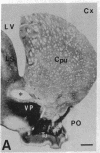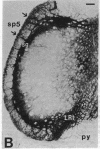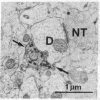Abstract
A chemical selection procedure has been used to prepare a hybrid hybridoma cell line (P4C1) following fusion of two previously established hybridomas secreting antiperoxidase and antisubstance P, respectively. P4C1 secretes bispecific monoclonal antibody alongside the two parental antibodies, with no visible inactive heterologous heavy-light chain pairs. The bispecific monoclonal antibody is thus easy to purify in excellent yields. The advantage of its monovalency for one antigen and simultaneous binding of a marker enzyme has been explored for its potential use in competitive immunoassays. Its use in immunocytochemistry led to major improvements in sensitivity, signal-to-noise ratio, simplification of staining procedures, and ultrastructural preservation of subcellular elements. Particularly remarkable was that, unlike conventional procedures, the immunoreaction with the bispecific monoclonal antibody was homogeneously distributed across the entire thickness of a 50-micron section.
Full text
PDF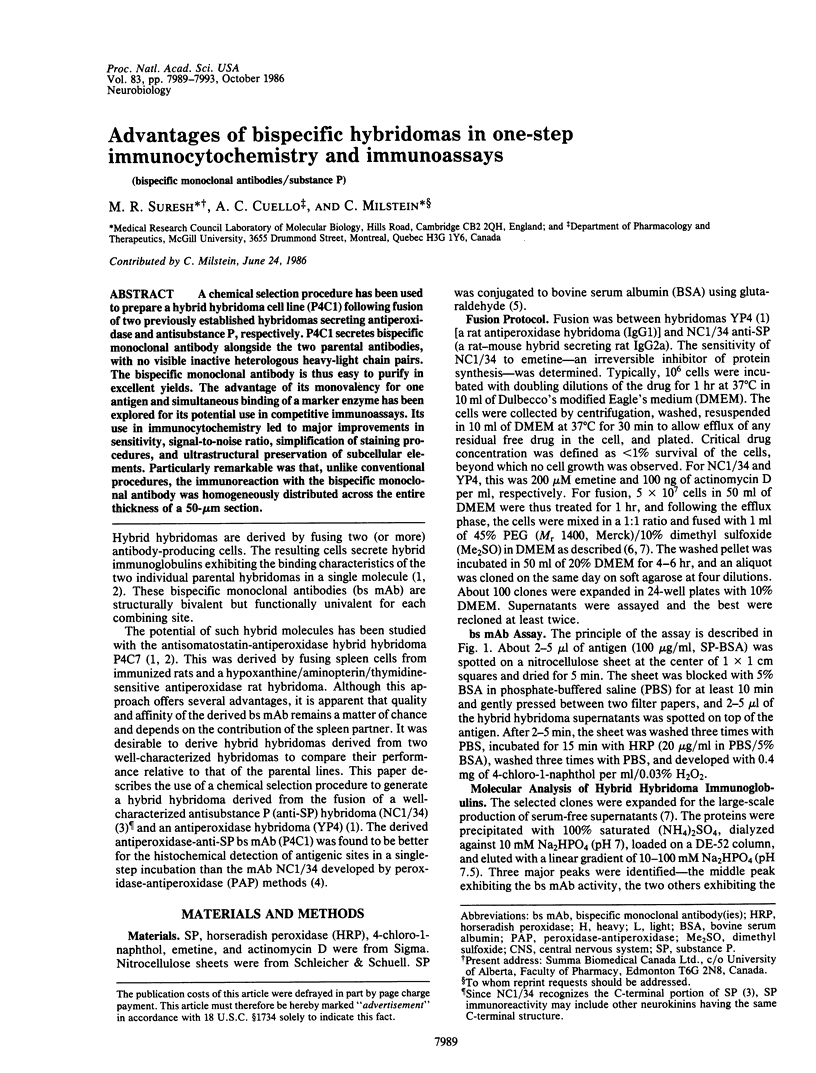
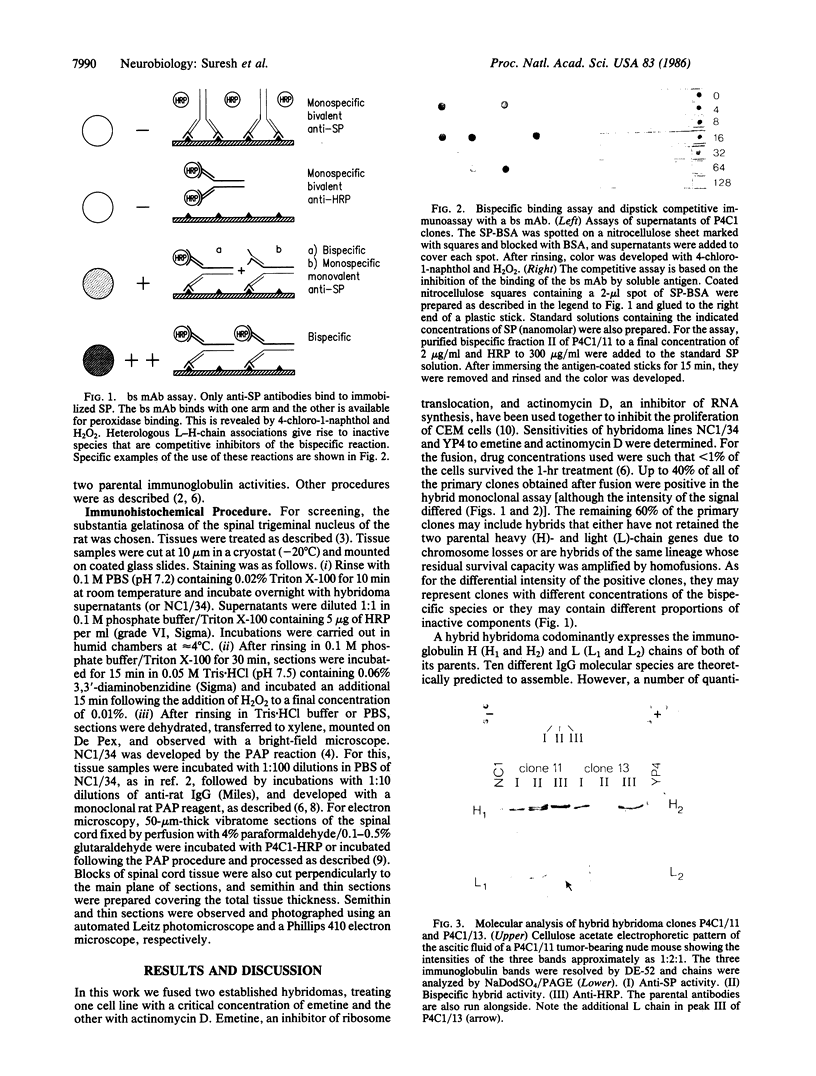
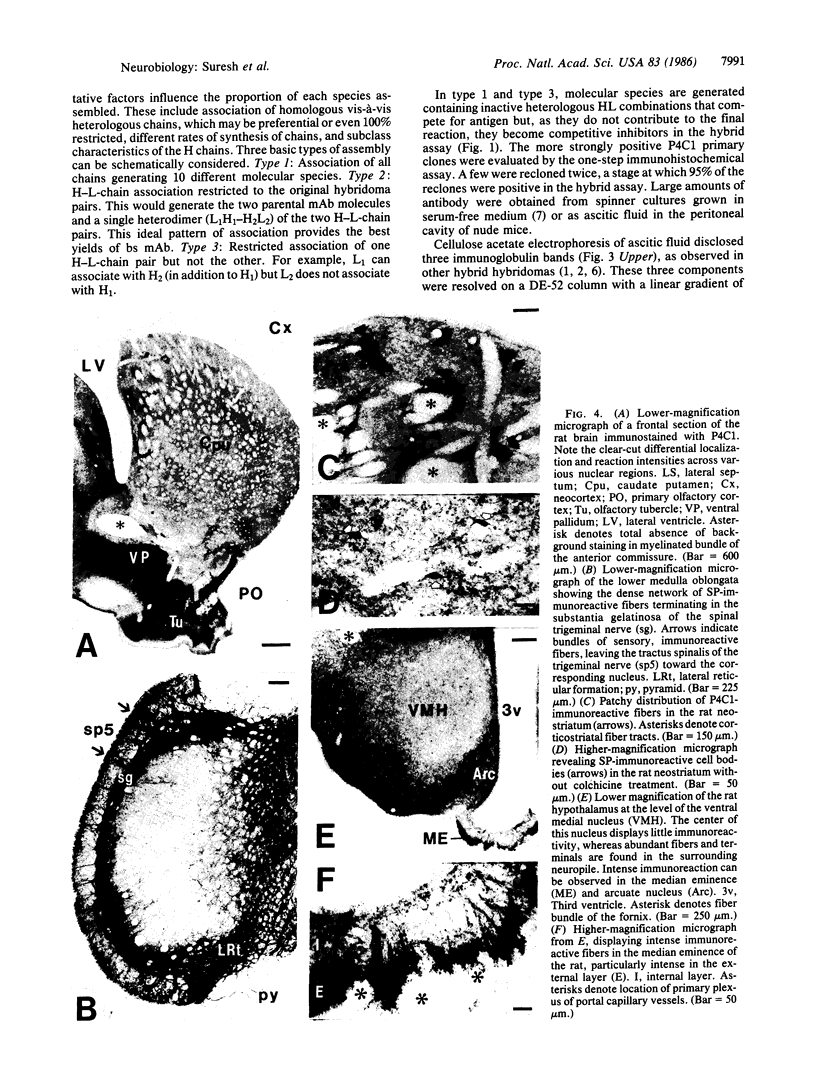
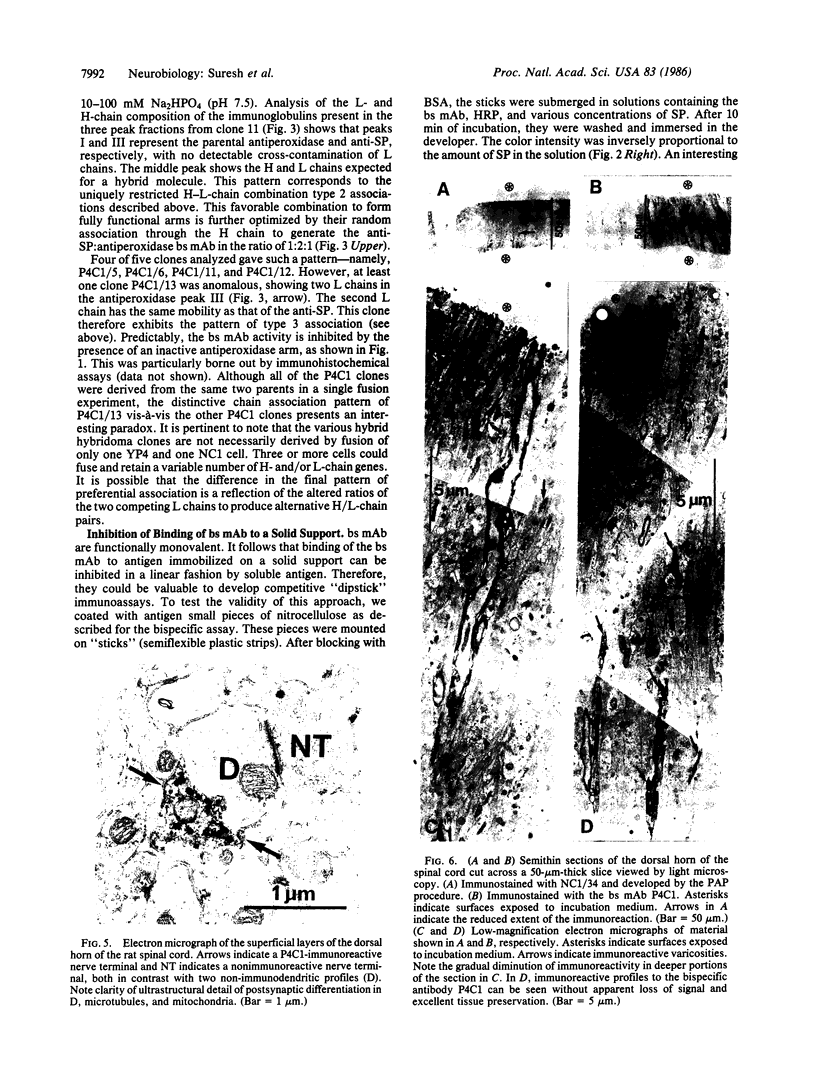
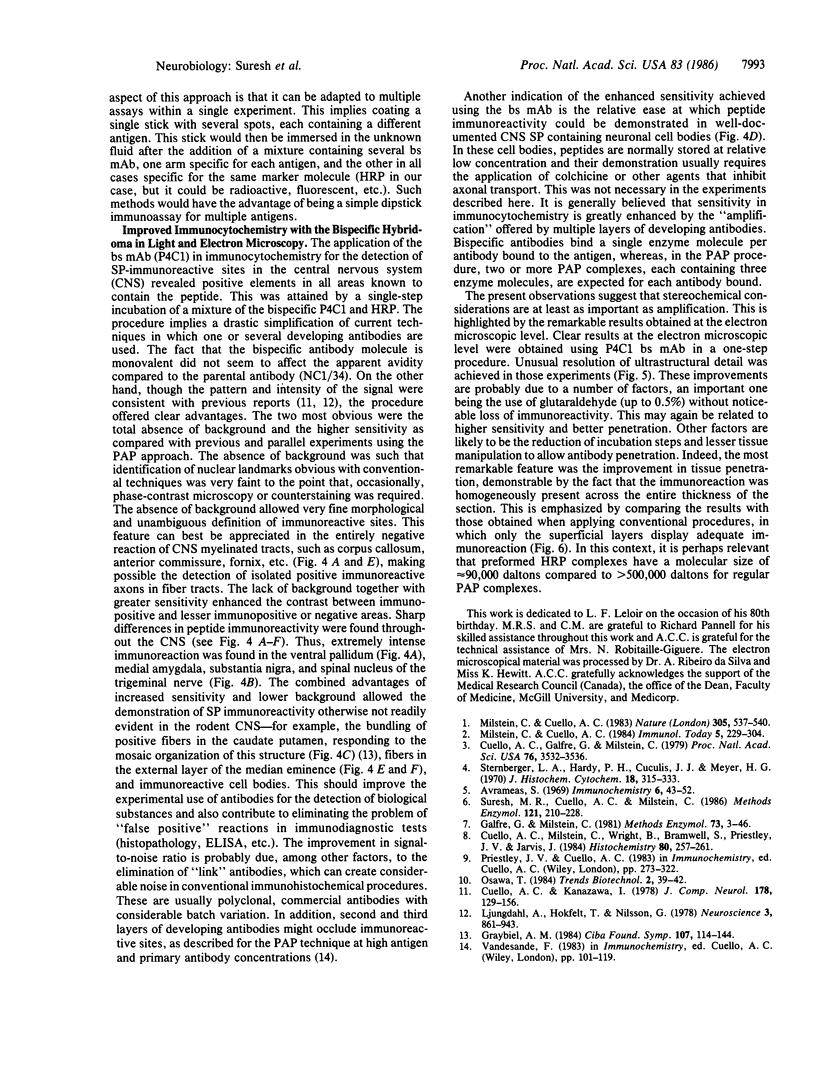
Images in this article
Selected References
These references are in PubMed. This may not be the complete list of references from this article.
- Avrameas S. Coupling of enzymes to proteins with glutaraldehyde. Use of the conjugates for the detection of antigens and antibodies. Immunochemistry. 1969 Jan;6(1):43–52. doi: 10.1016/0019-2791(69)90177-3. [DOI] [PubMed] [Google Scholar]
- Cuello A. C., Galfre G., Milstein C. Detection of substance P in the central nervous system by a monoclonal antibody. Proc Natl Acad Sci U S A. 1979 Jul;76(7):3532–3536. doi: 10.1073/pnas.76.7.3532. [DOI] [PMC free article] [PubMed] [Google Scholar]
- Cuello A. C., Kanazawa I. The distribution of substance P immunoreactive fibers in the rat central nervous system. J Comp Neurol. 1978 Mar 1;178(1):129–156. doi: 10.1002/cne.901780108. [DOI] [PubMed] [Google Scholar]
- Cuello A. C., Milstein C., Wright B., Bramwell S., Priestley J. V., Jarvis J. Development and application of a monoclonal rat peroxidase antiperoxidase (PAP) immunocytochemical reagent. Histochemistry. 1984;80(3):257–261. doi: 10.1007/BF00495774. [DOI] [PubMed] [Google Scholar]
- Galfrè G., Milstein C. Preparation of monoclonal antibodies: strategies and procedures. Methods Enzymol. 1981;73(Pt B):3–46. doi: 10.1016/0076-6879(81)73054-4. [DOI] [PubMed] [Google Scholar]
- Graybiel A. M. Neurochemically specified subsystems in the basal ganglia. Ciba Found Symp. 1984;107:114–149. doi: 10.1002/9780470720882.ch7. [DOI] [PubMed] [Google Scholar]
- Ljungdahl A., Hökfelt T., Nilsson G. Distribution of substance P-like immunoreactivity in the central nervous system of the rat--I. Cell bodies and nerve terminals. Neuroscience. 1978;3(10):861–943. doi: 10.1016/0306-4522(78)90116-1. [DOI] [PubMed] [Google Scholar]
- Milstein C., Cuello A. C. Hybrid hybridomas and their use in immunohistochemistry. Nature. 1983 Oct 6;305(5934):537–540. doi: 10.1038/305537a0. [DOI] [PubMed] [Google Scholar]
- Sternberger L. A., Hardy P. H., Jr, Cuculis J. J., Meyer H. G. The unlabeled antibody enzyme method of immunohistochemistry: preparation and properties of soluble antigen-antibody complex (horseradish peroxidase-antihorseradish peroxidase) and its use in identification of spirochetes. J Histochem Cytochem. 1970 May;18(5):315–333. doi: 10.1177/18.5.315. [DOI] [PubMed] [Google Scholar]
- Suresh M. R., Cuello A. C., Milstein C. Bispecific monoclonal antibodies from hybrid hybridomas. Methods Enzymol. 1986;121:210–228. doi: 10.1016/0076-6879(86)21019-8. [DOI] [PubMed] [Google Scholar]








